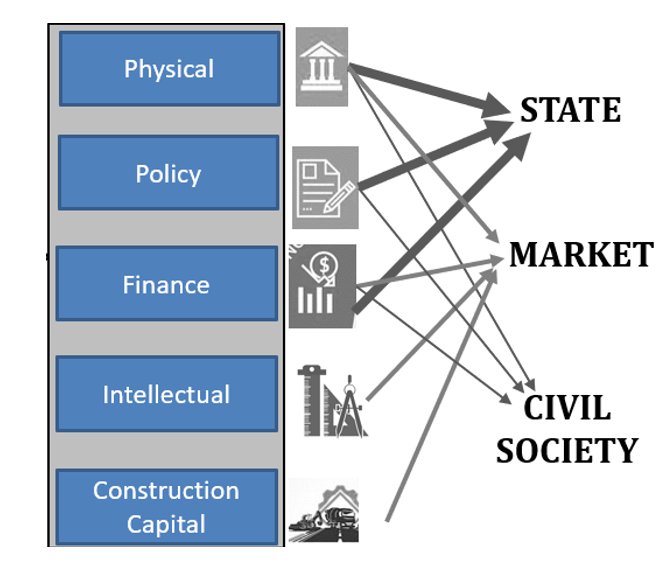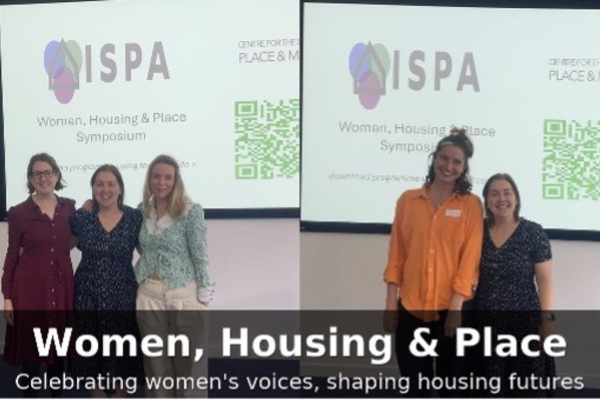
Sana Malik is currently pursuing doctoral study in the School of Housing, Building & Planning (HBP), Universiti Sains Malaysia. She is on study leave from the University of Management and Technology (HomesPakistan.com), where she was working as Assistant Professor in the School of Architecture and Planning. Sana researches in Housing, Urban/Rural Sociology and Architectural design. Her current PhD thesis is focused on institutional stakeholder collaborations for affordable housing provision in the case of Pakistan.
Housing is more than just shelter because it can offer community development and employment opportunities. Generally, the way in which a nation’s economy is structured relates to how its housing provision is organized. The New Urban Agenda, launched by the United Nations at the Habitat III Quito Conference in 2016, acknowledged housing as a catalyst for creating ‘sustainable cities and communities’. This is otherwise known as Goal 11 of the Sustainable Development Goals (SDGs) which considers building, and managing, urban spaces as a core component for achieving social and economic sustainable development. In essence, the aim of this SDG is framed around the idea that multiple stakeholders (politicians, state departments; developers, consultants, financial institutions, social enterprises, NGOs communities) must put in a greater effort and commitment to achieving an adequate global level of housing provision by 2030, which is a collective responsibility to cope with urbanization and socio-economic prospects.
In recognition of the SDGs, and the global shortage of affordable housing, there is a need to understand the role of stakeholder engagement in affordable housing provision, from both conceptual and practical perspectives. Affordable housing is defined by several different aspects of affordability, including median income levels of households and construction costs. It is a complex and often daunting task, as it involves engagement patterns between, and across, government agencies and private developers within institutional arrangements. This encourages further collaboration and coordination between several stakeholders such as architects, planners, NGOs, banks, communities, builders, contractors, and building material suppliers, involved in the process of housing development. As such, a housing development project takes a lot of time, funding, planning, and commitment from many stakeholder groups. Housing stakeholders in multiple countries have undertaken collaborative practices to address their housing shortage issues. Microbrigade movements in Cuba and Sweden’s BoKlok housing, have succeeded in providing housing at affordable rates to poor sections of society through multi-stakeholder collaborations. Such collaborative frameworks require an institutional platform to develop housing through a multi-pronged approach which includes advancing the affordable housing sector and attaining much-desired momentum to address the existing shortcomings of such housing provision in most developing countries.
According to Freeman (1984), stakeholders of affordable housing provision are defined as ‘the groups or organizations that can affect, or be affected by, engaging in affordable housing projects’. Stakeholders such as financial institutions, control agencies, customers, and partners will have a vested interest in the project’s outcomes. Thus, they influence the whole cycle of the project and its outcomes. As several stakeholders are involved in the various stages of affordable housing development it is a complex environment for decision-making, and so an integrated analytical framework cannot address everyone’s concerns (Margerum, 1997). As an alternative, key sectors of housing development should focus on achieving collaboration goals and sustainable outcomes (Campbell & Fainstein, 2003). Three key groups of stakeholders are identified with regards to the provision of affordable housing. These have previously been classified (see Moore and Koontz, 2003), as State (government), market (private sector) and civil society (social enterprises & NGOs) in relation to their current availabilities of resources to assist with the provision of affordable housing. This classification of stakeholders reveals some interesting differences in terms of the resources that the different stakeholder groups offer to housing provision. For instance, all major State (government) stakeholders operate within the physical planning of housing provision which can include work around the provision of land and infrastructure, design and planning of housing provision, as well as housing provision policy and financing. Whereas, many market stakeholders are often orientated more towards housing development, construction, and the provision of financial capital. Meanwhile, stakeholders from civil society are more often associated with providing financial plans in the form of interest-free loans and mortgage facilities, policy and research. On the other hand, social enterprises can play an active role in developing affordable housing schemes in parallel with government initiatives. Based on this description, five types of resources are identified as necessary for ensuring good-quality affordable housing provision, namely: physical (land & infrastructure); intellectual (design & planning); policy (strategies and regulations); construction capital; and, financial resources. Housing stakeholders (e.g. developers, policy-makers, researchers) need to undertake more research concerning the links and linkages (and associated power relations) between the different stakeholder groups involved in affordable housing planning and practice. I have mapped these linkages in Figure 1 below.

These linkages relate to the power relations between the different organizations and stakeholder groups. Identifying, and understanding, these power relations within and between organizations, and the associated consequences on affordable housing development, is key for real estate studies and urban development (Ball, 1998). Active networking and a shared understanding of stakeholders across spatial boundaries and institutions through different forms of vertical business collaborations (Daniels, 1999; Wondolleck & Yaffee, 2000) can provide institutional grounds for the effective provision of affordable housing. This development agenda also calls for better collective stakeholder engagement around the provision of affordable housing in terms of resource sharing, as shown in Figure 1. Looking specifically at the general housing conditions across the Global South, there is an urgent need for viable stakeholder engagement strategies that promote resource exchange that facilitates the provision of good quality housing provision for affordable groups. Future research in affordable housing must build on existing institutional, stakeholder and collaboration theories to inform a new conceptual and methodological framework for extensive housing analysis. Such future studies are essential for creating innovative collaboration processes to provide affordable houses to poor communities, hence achieving SDG11 and bringing socio-economic sustainability, that would be well-suited to the context of developing countries.
Follow Sana on Twitter: @MalikSana28
References
Ball, M. (1998). Institutions in British property research: a review. Urban Studies, 35(9), 1501-1517.
Campbell, S., & Fainstein, S. S. (2003). Readings in Planning Theory (Studies in Urban & Social Change).
Daniels, T. (1999) When city and country collide. Managing growth in the metropolitan fringe, Washington, DC: Island Press.
Freeman, R. E. (1984). Strategic management: A stakeholder approach. Boston: Pitman.
Margerum, R. D. (1997). Integrated approaches to environmental planning and management. Journal of Planning Literature, 11(4), 459-475.
Moore, E. A., & Koontz, T. M. (2003). Research note a typology of collaborative watershed groups: Citizen-based, agency-based, and mixed partnerships. Society &Natural Resources, 16(5), 451-460.
Wondolleck, J. & Yaffee, S.L. (2000) Making collaboration work: Lessons from innovation in nature resource management, Washington, DC: Island Press.






